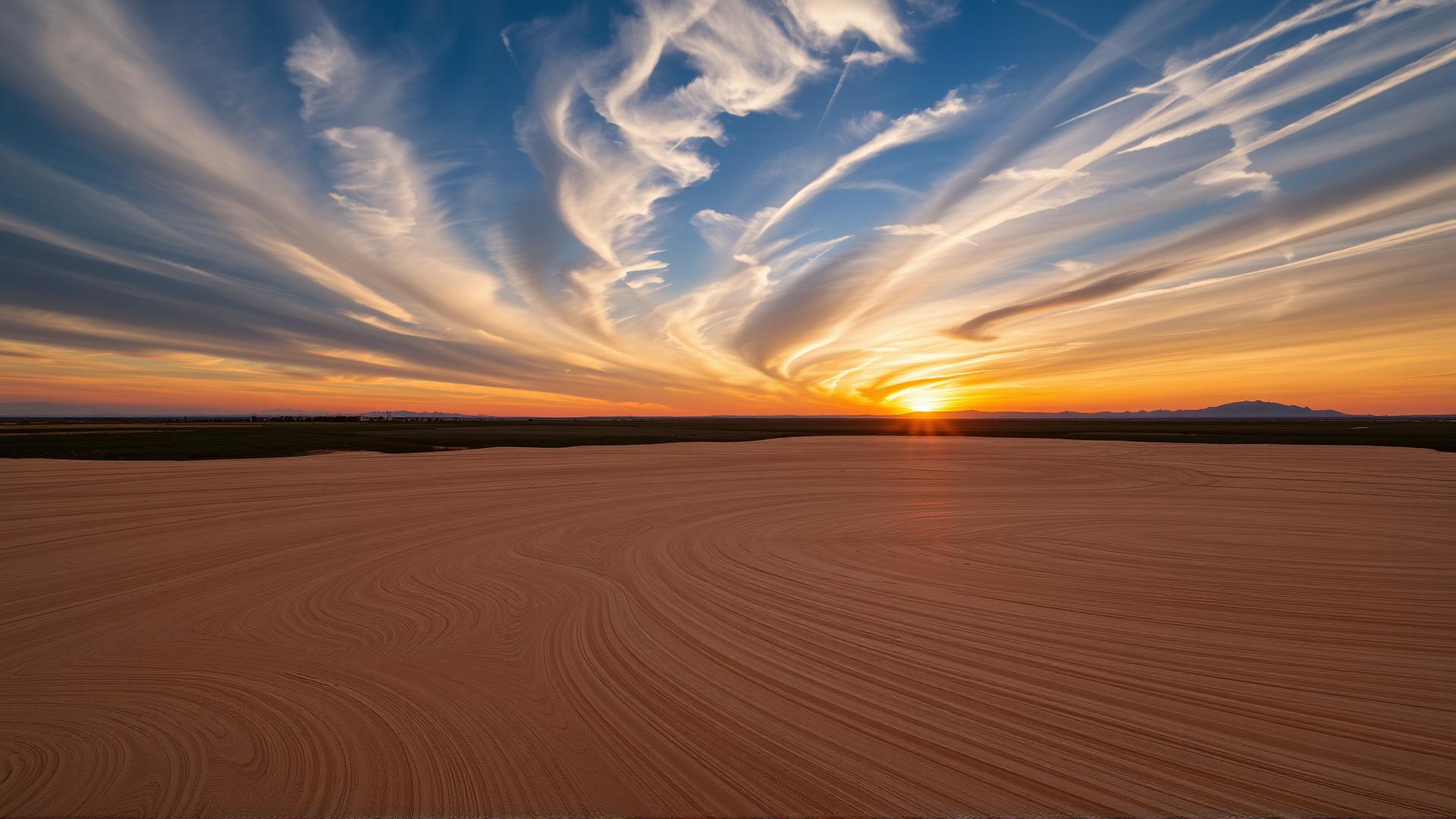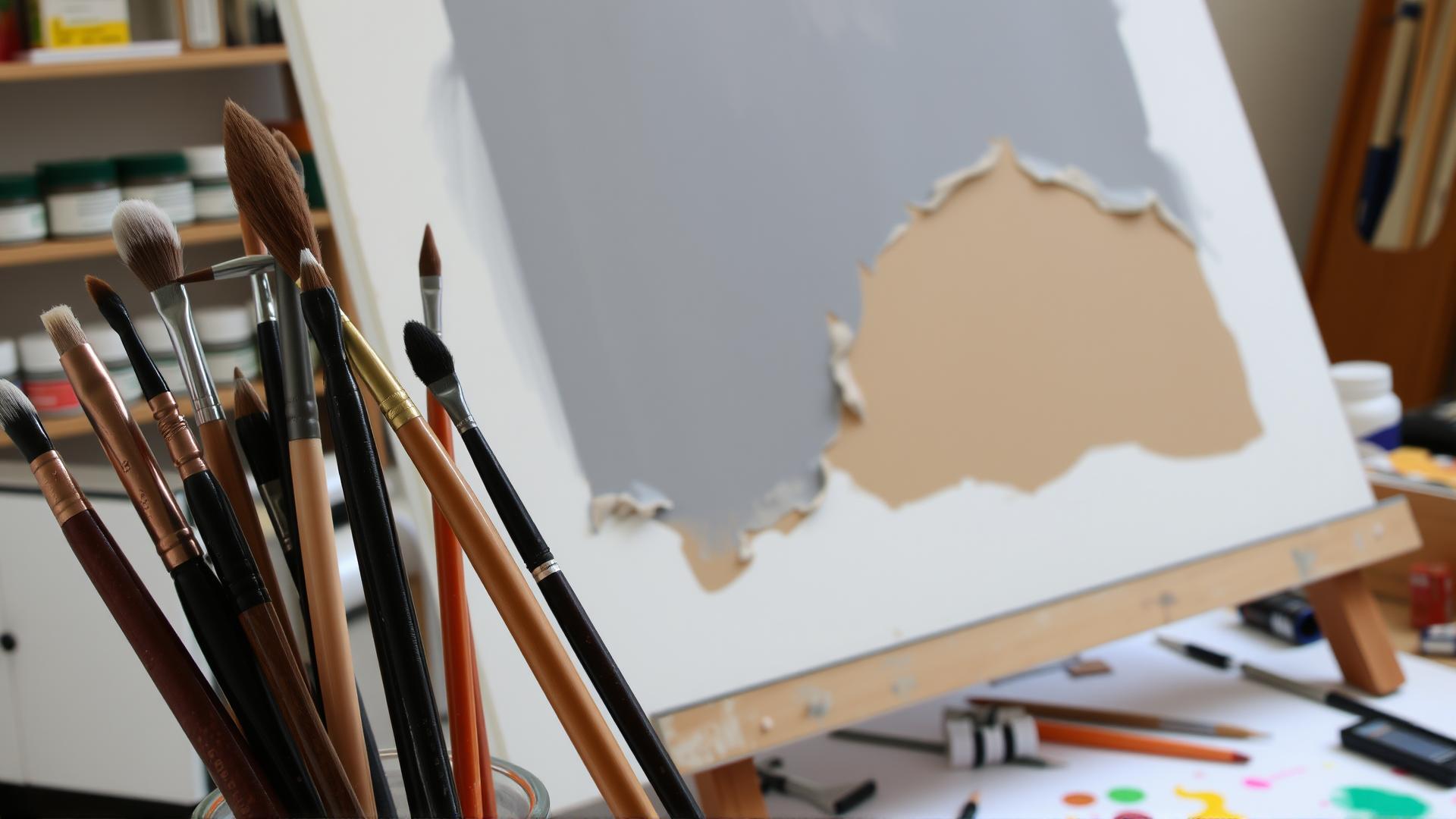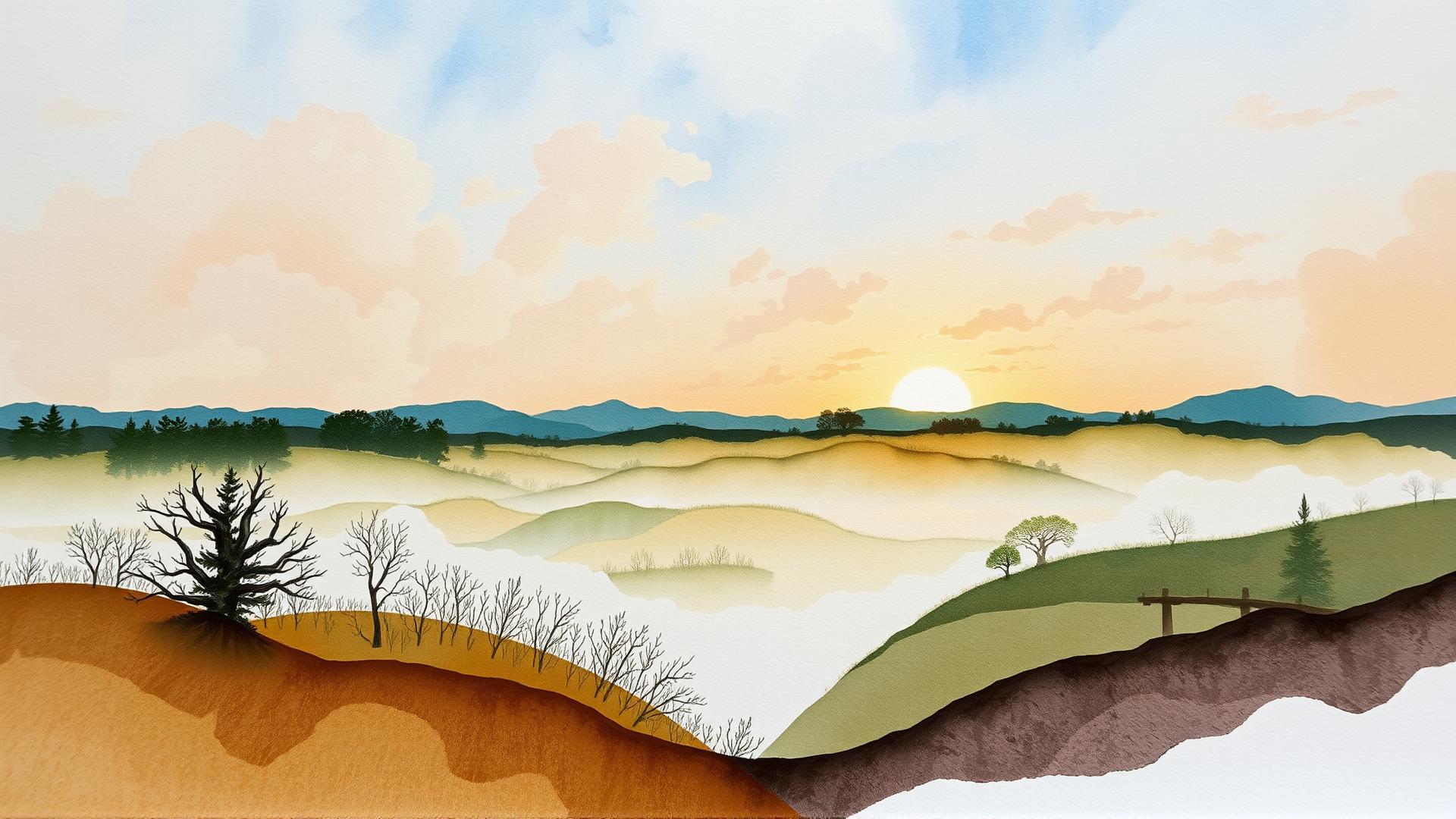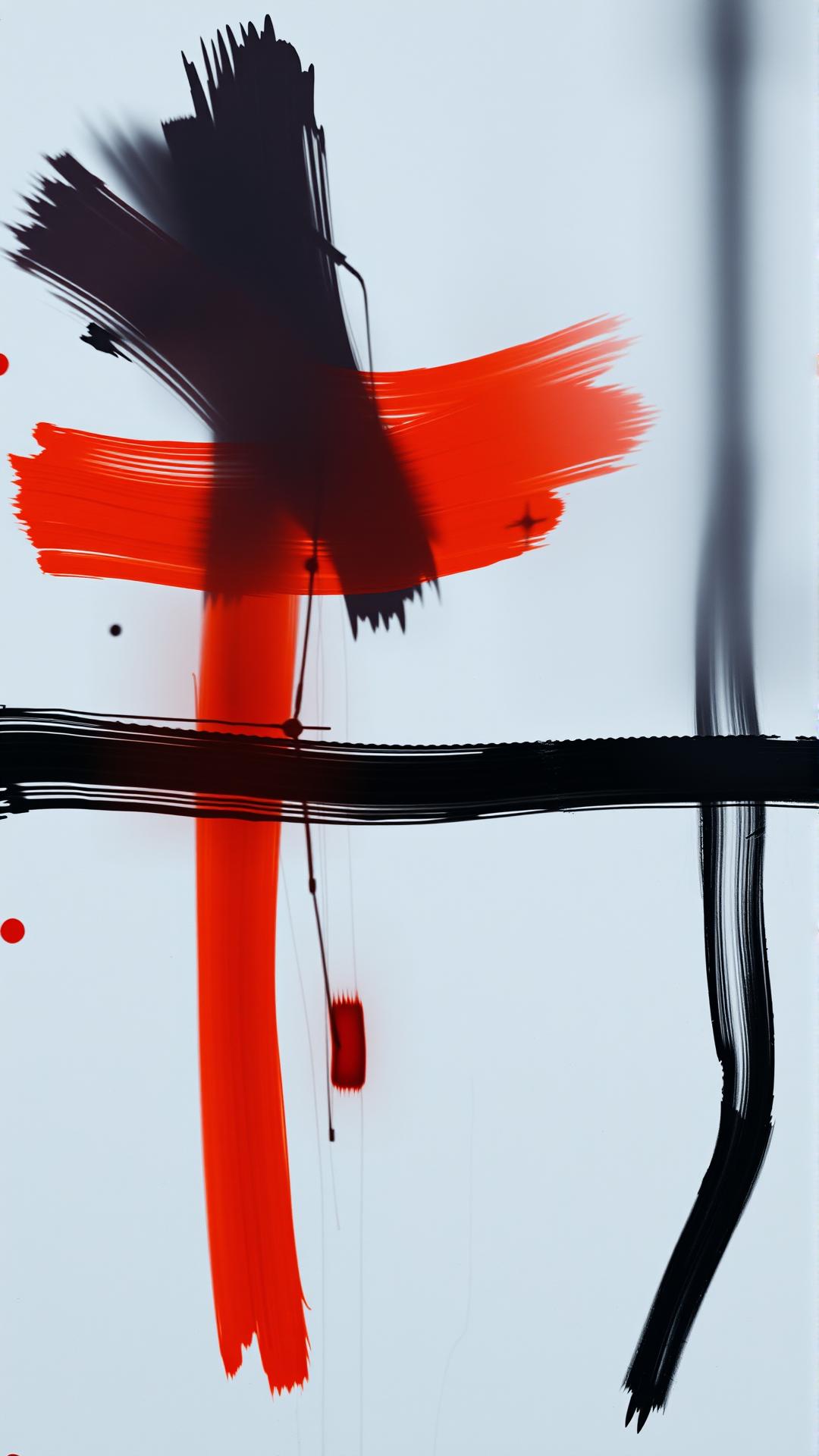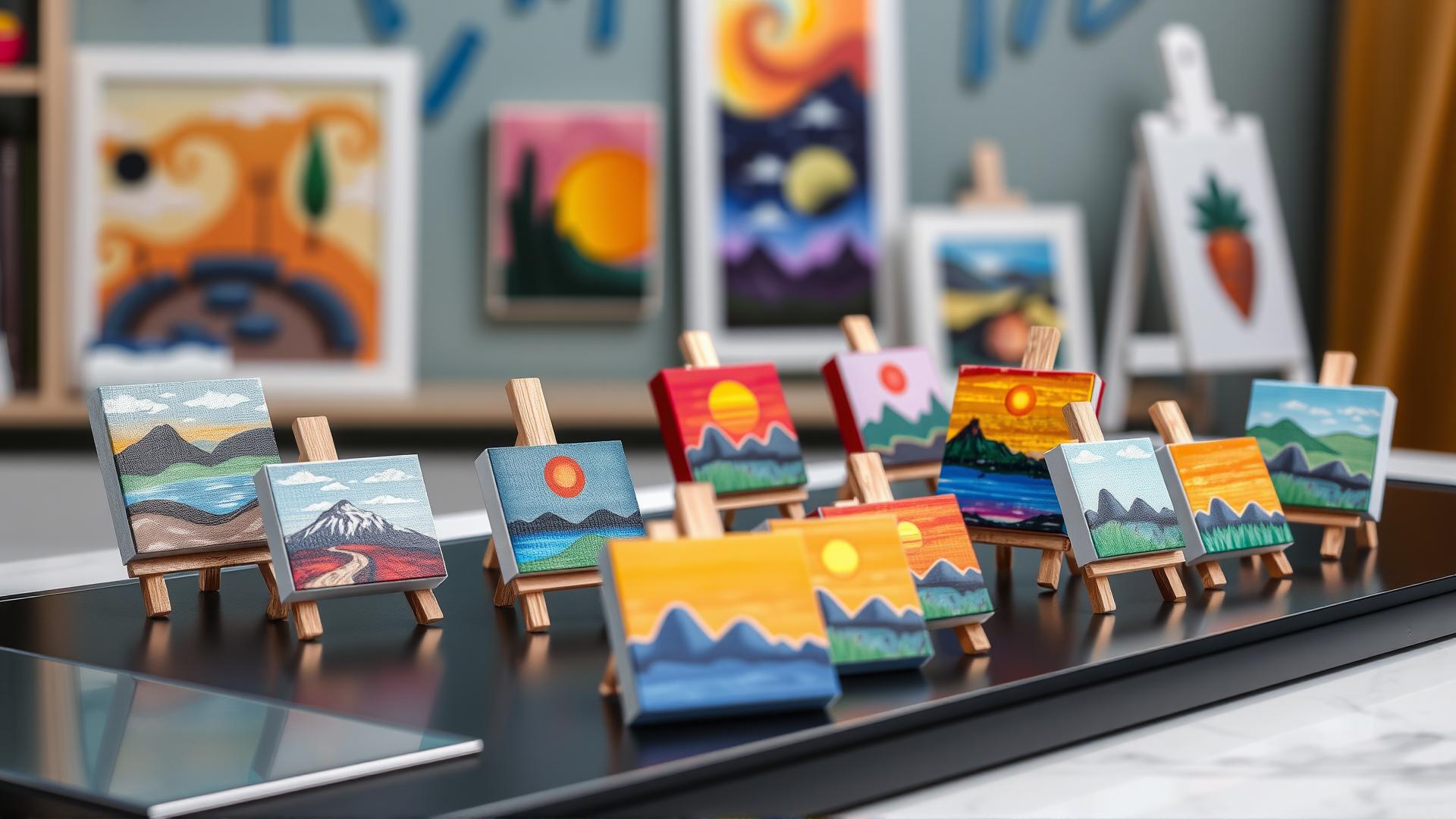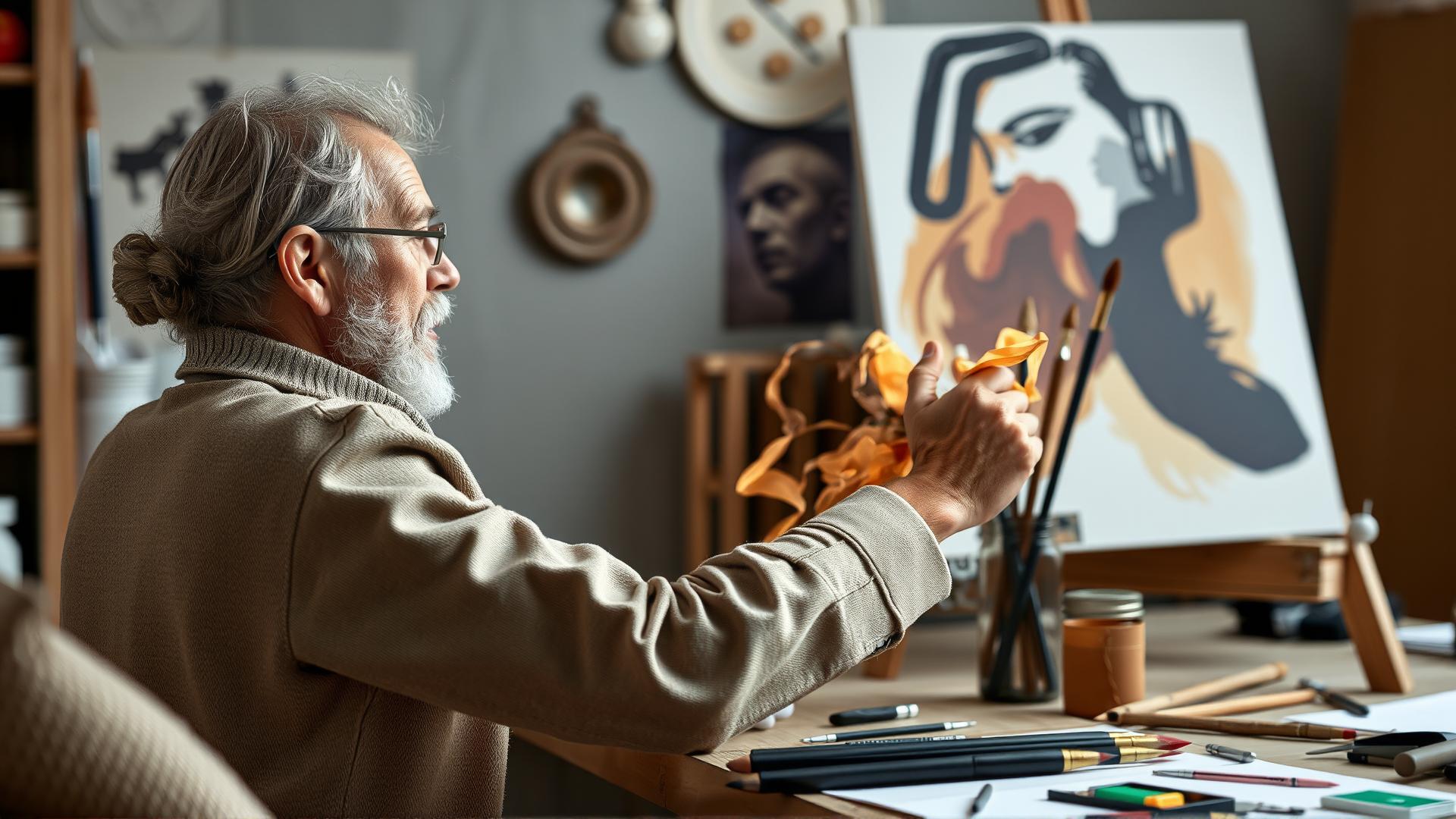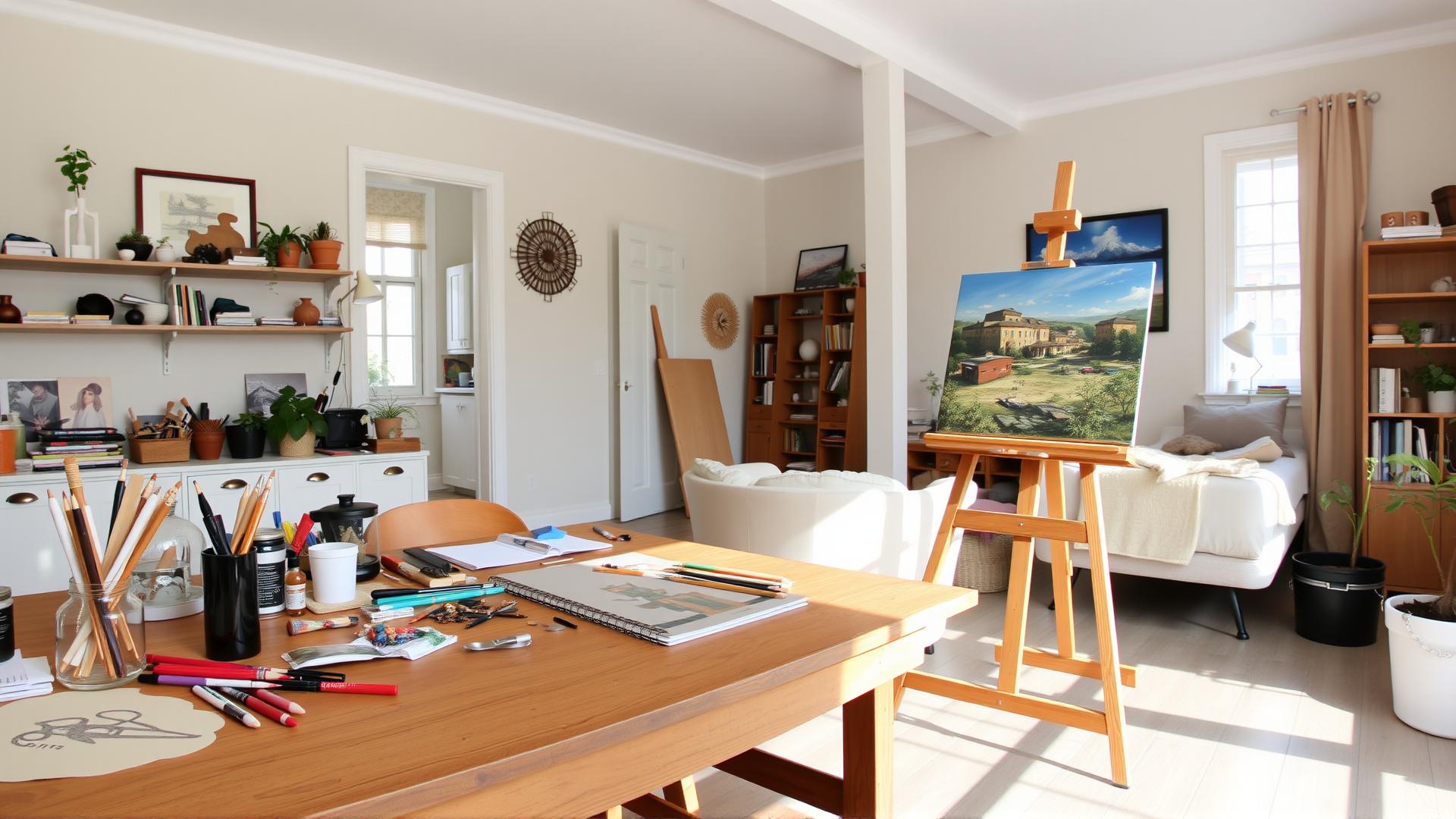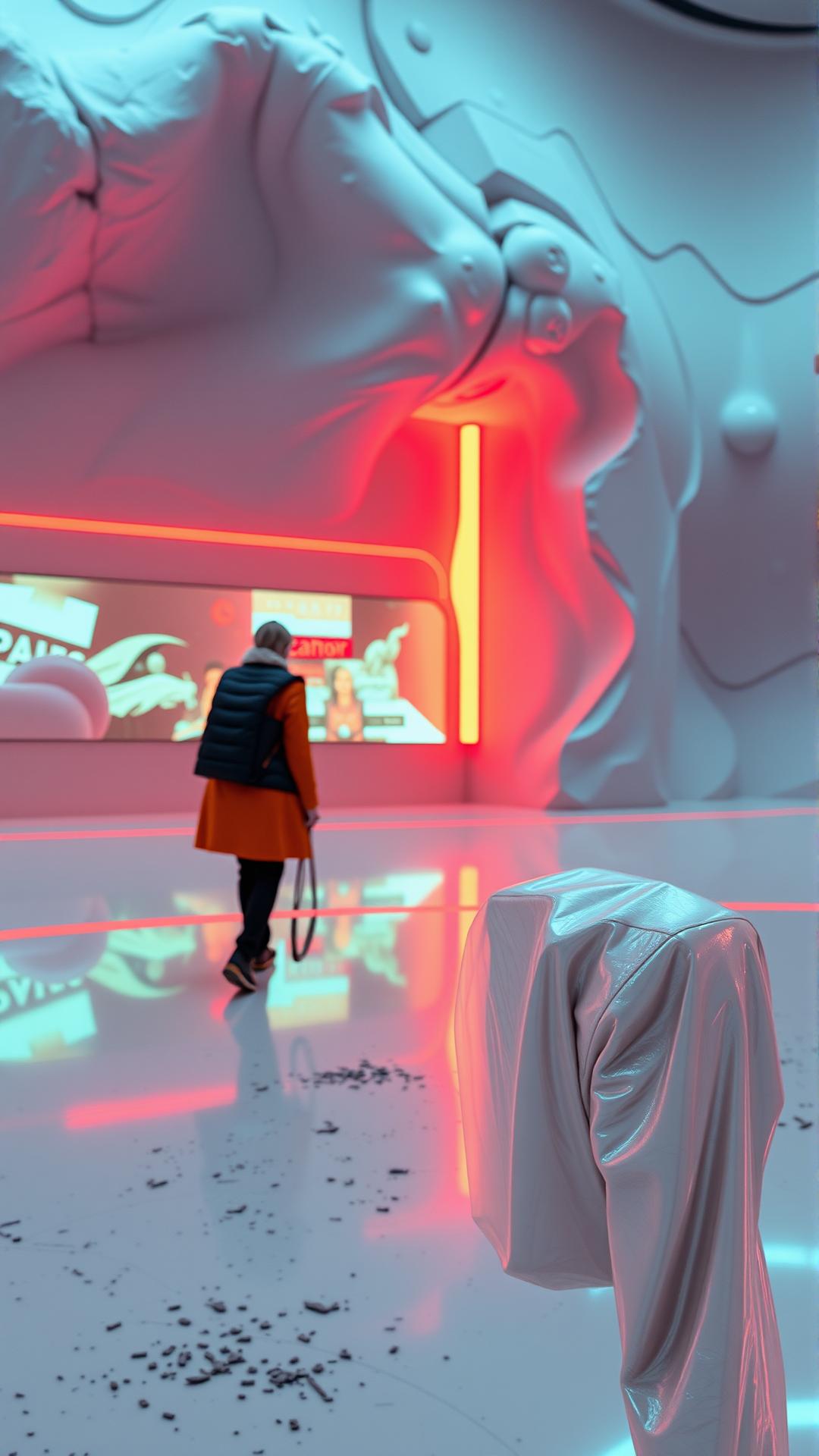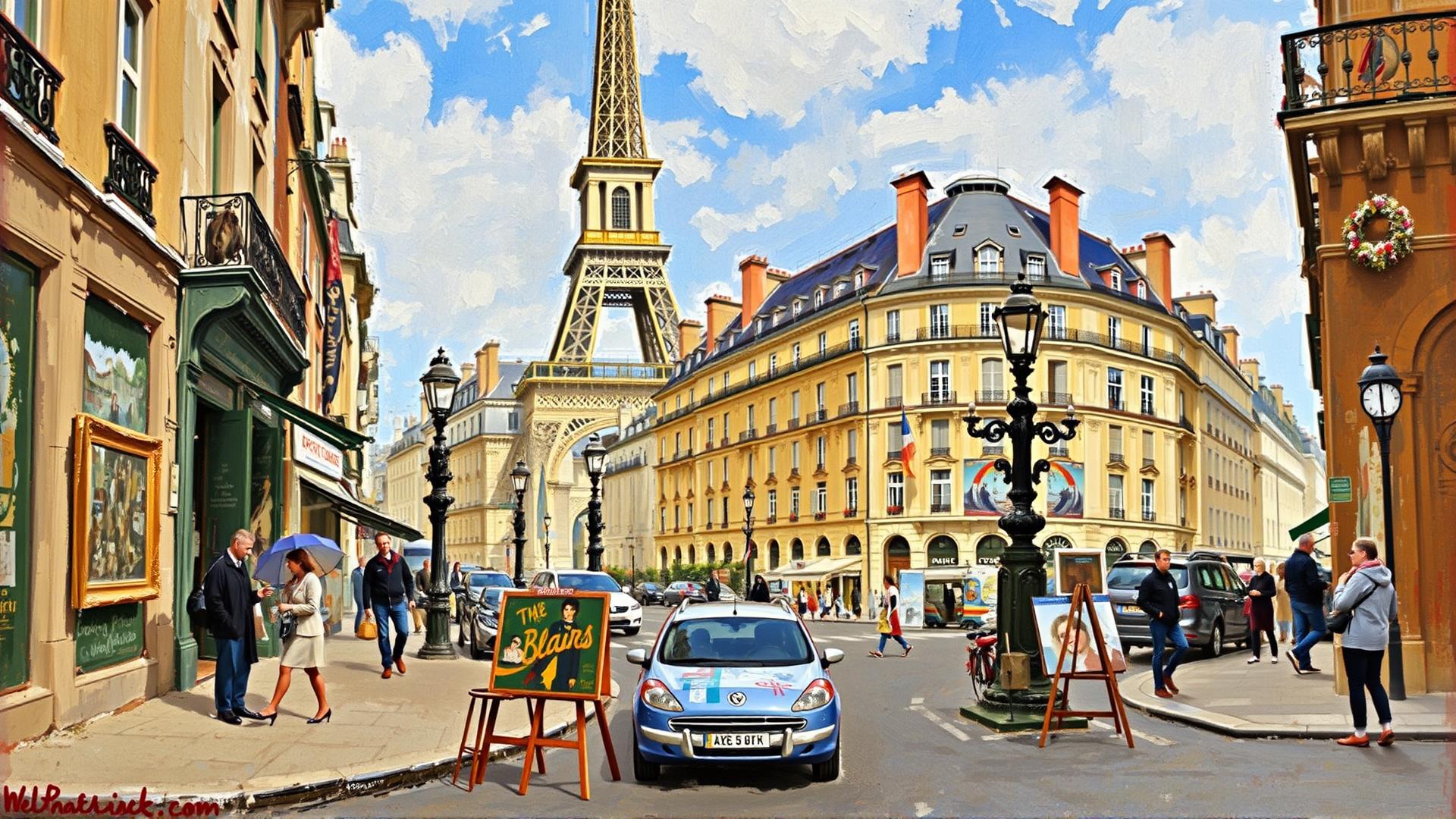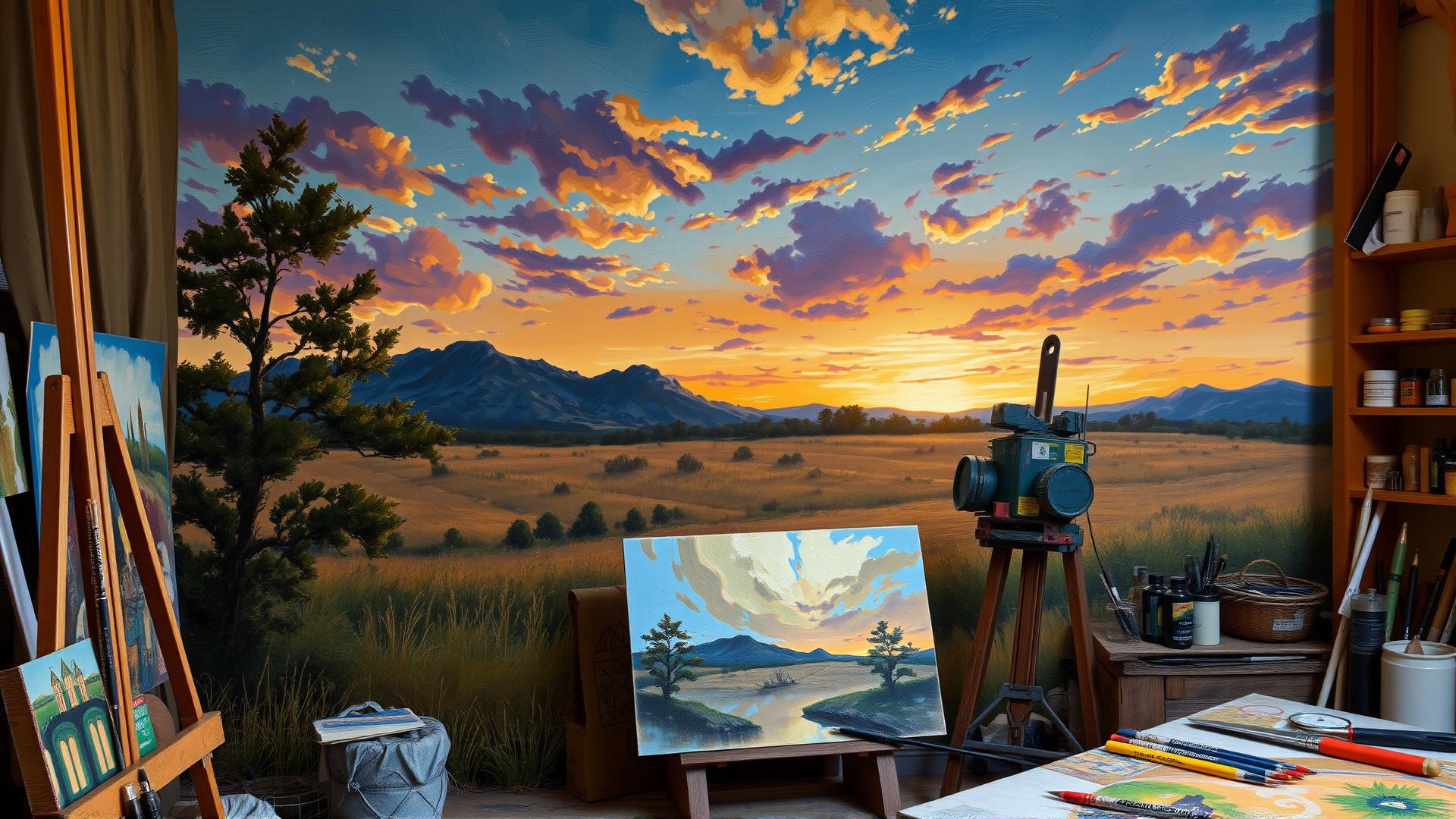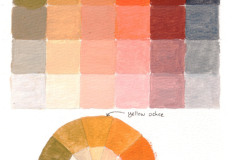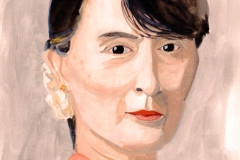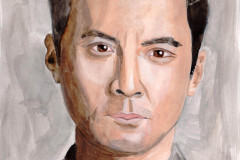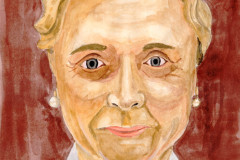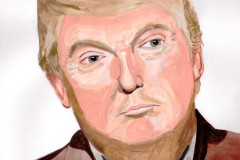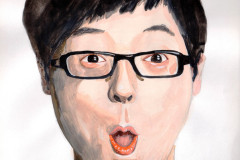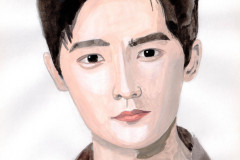Introduction
Abstract landscape painting has redefined how we view and interpret our natural surroundings. By merging traditional landscape elements with abstract techniques, artists create compositions that transcend realistic depictions, offering viewers a vivid emotional experience. This article delves into the essence of abstract landscape painting, exploring its origins, evolution, and the innovative methods that contemporary artists utilize to reshape our understanding of landscapes. In a world increasingly defined by technology and modernity, this art form invites us to reconnect with nature and reflect on our place within it.
As we dissect the nuances of abstract landscape painting, we will examine the influence of movements such as Impressionism and Expressionism, which have left an indelible mark on this genre. By investigating different styles and techniques, we will uncover how artists express their emotional landscapes alongside the physical ones, enhancing our appreciation for the complexity of both art and nature. Join us on this insightful journey into the minds of today’s most innovative abstract landscape artists.
Understanding Abstract Landscape Painting Bridging Emotion and Representation in Contemporary Art
Abstract landscape painting is a captivating artistic form that challenges the boundaries of traditional landscape representation while embracing the freedom of abstraction. This genre seeks to evoke emotional responses rather than merely depict the physical attributes of the landscape. By merging elements of nature with imaginative expression, abstract landscape artists create works that resonate on a deeper emotional level.
At its core, abstract landscape painting distances itself from precise representations of hills, valleys, or forests. Instead, it captures the essence of a landscape through shapes, colors, and textures that suggest rather than define. The characteristics of these paintings often include bold, vivid colors, dynamic forms, and spontaneous brushwork, all of which work together to convey a sense of mood and atmosphere. This departure from accuracy allows viewers to derive meaning from the work based on their personal experiences and emotions.
The balance between representation and emotional expression is a critical aspect of abstract landscape painting. While traditional landscape art aims to record and celebrate the beauty of nature, the abstract counterpart strips away these details to highlight feelings and sensations. Artists may utilize a color palette that evokes tranquility or chaos, demonstrating how different hues can affect emotional perception. For instance, cooler shades might elicit calmness, whereas warm colors can evoke feelings of passion or energy.
Artists often draw inspiration from their environments, translating geographic elements into abstract forms. This process not only redefines the landscape but also transforms it into a personal narrative. By interpreting experiences, memories, and emotions, artists allow viewers to engage with the work on multiple levels. The viewer’s interpretation becomes an integral part of the artwork, inviting a dialogue that goes beyond visual observation.
Abstract landscape painting serves as a powerful medium for exploring the relationship between humans and their surroundings. In an increasingly digital world, artists may seek to reconnect with nature or explore the impact of urban landscapes on the human psyche. In this way, the genre becomes a reflection of contemporary life, inviting viewers to ponder their own existence within the context of the natural world.
Through its unique blend of representation and abstraction, the abstract landscape painting stands as a dynamic realm where emotional expression reigns supreme. This powerful artistic form continues to evolve, pushing boundaries and inviting diverse interpretations, ultimately enriching the conversation around art and emotion in contemporary practices.
Techniques in Abstract Landscape Painting Exploring Boundaries Through Innovative Techniques
Abstract landscape painting is a vibrant intersection of technique and emotion, where artists break free from the constraints of traditional representation. Techniques employed in this genre are varied, with each artist putting their unique spin on methods to create evocative works that encourage personal interpretation.
Color Play and Emotional Resonance
Color plays a fundamental role in abstract landscape painting. Artists often use color to express a mood rather than to represent reality. Vibrant hues can evoke feelings of joy or chaos, while muted tones might convey tranquility or melancholy. For instance, a painter might use deep blues and greens to suggest a calm, serene sea, contrasting these with fiery reds and oranges to represent a tumultuous sky. This manipulation of color can lead viewers to experience a landscape in a profoundly emotional way, creating a personal connection between the observer and the artwork.
Texture as a Expressive Tool
Texture is another crucial element in abstract landscapes. The application of paint can vary from smooth to rough, influencing the viewer’s perception and emotive response. Artists might employ techniques such as impasto, where thick layers of paint create a tactile surface that invites touch and engagement. Alternatively, they may use glazing techniques to layer colors, creating depth and complexity that draws the eye into the work. The tactile quality of a piece can transform a simple visual experience into a captivating sensory journey.
Dynamic Composition
Complementing the use of color and texture is the organization of elements within the composition. Abstract landscape artists often play with balance and movement, drawing the viewer’s eye across the canvas in unexpected ways. The placement of shapes, lines, and forms can lead to a sense of harmony or deliberate disarray. An artist might opt for asymmetry, challenging traditional compositional rules, or introduce negative space to allow the viewer’s imagination to fill in the blanks. This deliberate manipulation of structure engages the audience and invites them to ponder the boundaries of the landscape depicted.
Each of these techniques—color, texture, and composition—contributes to the distinctiveness of abstract landscape painting. As artists continue to push the boundaries of these methods, they also challenge viewers to reconsider their own emotional experiences in relation to the landscapes represented on canvas.
Symbolism and Meaning in Abstract Landscapes A Journey into Personal and Universal Themes
The Language of Color and Form
Abstract landscape painting serves as a canvas for artists to express emotions, reflections, and personal narratives through the lens of interpretation. The symbolism embedded in these works often transcends literal representation, embodying themes that resonate on both individual and collective levels. Every brushstroke, every hue can convey a deep-seated meaning, inviting viewers to decipher the artist’s emotional landscape.
Color, one of the most powerful elements, often holds particular significance. For instance, warm hues such as reds and yellows may evoke feelings of passion, urgency, or even nostalgia, while cooler tones might suggest tranquility or melancholy. The interplay between light and shadow also adds to this emotional palette, with darker shades frequently representing conflict or introspection, contrasting with vibrant highlights that symbolize hope and clarity. This deliberate manipulation of color is not merely aesthetic; it acts as a vital form of communication, expressing feelings that words often fail to capture.
The abstraction of natural elements further deepens the symbolic layers of the artwork. Mountains, often depicted in geometric shapes, can symbolize strength and resilience, while flowing lines representing water can signify fluidity and change. Abstract interpretations of trees may reflect growth, interconnectedness, or even isolation, revealing how nature mirrors human conditions. The abstraction technique enables artists to strip away the superfluous to focus on the essence of these elements, resonating with viewers’ own life experiences.
The absence of defined forms grants the observer liberty to project their interpretations. A vast expanse of color might evoke a sense of freedom or evoke memories of a specific place, thereby personalizing the experience. This duality of meaning — the artist’s intention intermingled with personal projections — illustrates a complex dialogue between the artwork and the viewer.
Abstract landscapes are rich with symbolism that extends beyond traditional confines. They encapsulate an emotional exploration, inviting viewers to engage in their own unique interpretations. Such narratives align seamlessly with contemporary society’s ever-evolving conversation about identity, environment, and the myriad connections that bind us all. As we continue to engage with these captivating visual stories, the boundaries of perception and significance expand, allowing for a more profound understanding of our shared human experience.
Contemporary Artists Shaping the Genre The Evolution of Abstract Landscape Painting
The Modern Voices in Abstract Landscapes
In the quest to push the limits of abstract landscape painting, contemporary artists have emerged as vital contributors, each imprinting their unique styles and perspectives onto the genre. These artists not only challenge traditional interpretations of landscapes but also evoke powerful emotional responses through their innovative use of form, color, and texture. Their work engages viewers in a deeper dialogue about nature, abstraction, and individual experience.
An exemplar of this movement is Gerhard Richter, whose dynamic approach merges abstraction with elements of realism. Utilizing squeegees and brushes, Richter deftly oscillates between painting techniques, allowing landscapes to emerge from layered colors and fragmented forms. His works often provoke a sense of ambiguity, inviting viewers to search for familiar landscapes within his abstract compositions. Richter’s influence stretches far, as he inspires younger artists to rethink the boundaries of representation and abstraction.
Another pivotal figure is Julie Mehretu, whose large-scale canvases reflect urban landscapes filled with complexity and chaos. Mehretu layers her works with intricate lines, maps, and gestural marks, creating immersive environments that explore notions of place, history, and time. Her unique vision not only embodies the physicality of landscapes but also the emotional undercurrents that come with them. In doing so, Mehretu expands the idea of landscape beyond geographic confines to include social and political dimensions.
Kara Walker introduces a different perspective by utilizing silhouette forms that play with historical narratives and racial identities within landscape settings. Though her work often engages with the past, it actively critiques conventional narratives of landscape painting. By integrating stark contrasts and provocative imagery into her compositions, Walker reshapes the dialogue surrounding race and geography, showing that landscapes are also constructs of cultural memory.
Through the works of these contemporary artists, abstract landscape painting transcends mere visual representation. They prompt us to reflect not only on the environments we inhabit but also on our emotional landscapes and collective histories. This transformation invites ongoing engagement with the genre, allowing for personal interpretation and a continually evolving understanding of what landscapes can signify in our lives.
The Role of Abstract Landscapes in Modern Society
Reflecting Contemporary Issues through Art
Abstract landscape painting holds a mirror to modern society, encapsulating the complexities of our world through innovative expressions that challenge conventional perceptions. As landscapes are increasingly transformed by urbanization, climate change, and social upheaval, these paintings become not merely decorative forms but powerful commentaries on the state of our environment and humanity. By transcending traditional representations, artists utilize abstraction to provoke dialogue on pressing contemporary issues.
In today’s visual culture, where inundation by imagery is the norm, abstract landscapes carry a unique weight. For instance, the use of non-representational forms and colors can elicit emotional responses while sparking critical consciousness regarding ecological challenges. Artists like Julie Mehretu employ layered techniques to express themes of chaos and connectivity, reflecting the juncture between civilization and nature. Through their work, viewers are invited to navigate their feelings of nostalgia, loss, and hope, creating a personal yet collective space for engagement.
Critiquing the Evolving Landscape
Contemporary abstract landscape paintings frequently critique the very constructs that have shaped our environment. In portraying fragmented landscapes, artists confront the fallout of technological advancement and urban expansion, raising questions about sustainability and our role in preserving the earth. For instance, works that utilize stark contrasts or jarring color palettes can represent the clash between nature and industrialization, evoking dissonance that compels reflection on the increasingly tenuous balance between these forces.
Abstract landscape art often embodies the emotional turmoil felt by individuals in the face of transformation. The isolation and alienation that result from modern living are subtly depicted through abstraction, allowing for a nuanced understanding of how personal experiences are intertwined with larger societal trends. Artists riff on the familiar, abstracting elements of the natural world to illuminate not just the beauty but also the fragility of our landscapes.
The significance of abstract landscapes in today’s world extends beyond aesthetic appreciation. They serve as platforms for dialogue, critique, and emotional resonance. As viewers engage with these innovative artworks, they are not merely spectators but active participants in the conversation about identity, environment, and the future of our shared spaces. This engagement sets the stage for the next dimension of abstract landscapes—an invitation to explore personal interpretations and emotional connections.
Engaging with Abstract Landscape Art Understanding Emotional Resonance
Encouraging Personal Interpretation
Engagement with abstract landscape paintings offers a unique opportunity for viewers to forge personal connections to the artwork. Unlike traditional representations that may depict a specific location with realistic detail, abstract landscapes invite a more imaginative interaction. They are not confined to the physical representation of terrain. Instead, they evoke an emotional response that can vary widely from one observer to another. Each brushstroke, color, and form contributes to an open dialogue between the viewer and the canvas, challenging individuals to project their own thoughts and experiences onto the artwork.
Personal interpretation can be encouraged by providing viewers with prompts or questions that stimulate introspection. For instance, asking viewers to imagine the emotions that a particular color evokes or considering what memories an abstract form might trigger can deepen their engagement. This process transforms the viewing experience into a reflective exercise, inviting individuals to discover their unique connections to nature and emotion through the artwork.
Fostering Emotional Connection
The emotional connection between the viewer and abstract landscape paintings is often intensified by the use of color theory and composition. Colors can create a specific mood or atmosphere. Warm tones like reds and oranges may evoke feelings of warmth and energy, whereas cooler shades, such as blues and greens, might inspire tranquility or contemplation. Recognizing these color dynamics can empower viewers to become more aware of their emotional responses as they interact with the art.
A deeper emotional connection can also be fostered through the physicality of the artwork itself. The texture of the paint, the layering techniques, and the overall scale of the canvas can create a palpable presence that draws viewers in. Engaging with these tactile aspects not only enriches the sensory experience but also allows for a more profound emotional engagement. Observing how light interacts with the texture of the painting can enhance the perception of depth and movement, further encouraging a more dynamic interaction.
Abstract landscape art serves as a mirror reflecting the emotions, thoughts, and experiences of those who engage with it. As viewers allow themselves the freedom to interpret and connect with these pieces, they can discover personal narratives that resonate profoundly, establishing a meaningful relationship between themselves and the artwork. Through this emotional exploration, abstract landscapes continue to evolve as vital components of contemporary art, fostering dialogue on individual experiences and collective sentiment.
The Future of Abstract Landscape Painting Speculating on Trends in Innovation and Emotion
Technological Advancements Shaping Artistic Expression
The future of abstract landscape painting is poised at an exciting intersection, where the natural world melds seamlessly with the digital realm. Artists, equipped with advanced technologies, are now exploring innovative techniques that transcend traditional methods. Virtual reality (VR) and augmented reality (AR) are revolutionizing how environments are perceived and represented, allowing painters to create immersive landscapes that evoke emotions beyond the physical canvas. Artists can now paint in 3D space, capturing the essence of nature in layers through a digital medium, thus expanding the boundaries of artistic expression.
Artificial intelligence (AI) is impacting the creative process. Some artists are utilizing AI algorithms to generate abstract imagery inspired by natural forms, presenting new interpretive opportunities. This integration invites a collaborative dynamic between human creativity and machine learning, leading to unexpected outcomes. These technological innovations are not mere tools but rather companions in the creative journey, encouraging artists to shift their perspectives on nature and landscape.
Cultural Shifts and Emotional Resonance
Simultaneously, cultural shifts are influencing the evolution of abstract landscape painting. Societies grappling with climate change and urbanization are increasingly drawn to artwork that reflects their concerns and aspirations. Artists are responding with pieces that embody the clash between nature and human existence, often encapsulating themes of loss, hope, and rebirth. As the world changes, so too does the interpretation of landscapes, evolving in tandem with contemporary dialogues about the environment.
Global connectivity allows contemporary artists to draw inspiration from diverse cultures, integrating various artistic traditions into their works. This blending of influences creates a rich tapestry of meanings, inviting viewers to engage with landscapes that embody multiplicity and complexity. The emotional resonance in these abstract pieces often serves as a commentary on the human experience, making them deeply relatable and poignant.
In envisioning the future, abstract landscape painting will likely continue to break down the barriers of traditional representation. Artists will navigate the potential of digital tools and cultural narratives to create works that are not only aesthetically compelling but also resonant with the emotional landscapes of their audiences. This evolving art form holds the promise of articulating humanity’s collective journey through an ever-changing world.
Conclusions
Abstract landscape painting stands as a testament to the fluidity of artistic expression, challenging the boundaries of how we perceive the world around us. By merging abstraction with landscape elements, artists open up new avenues for emotional connection, allowing viewers to engage with nature’s essence far beyond mere representation. The exploration of color, form, and technique not only enhances the aesthetic appeal but also deepens our understanding of the intricate relationship between humanity and the environment.
As we look towards the future of art, it is evident that the innovative spirit of abstract landscape painting will continue to inspire new generations of artists. By fostering a dialogue between abstraction and reality, this genre encourages us to appreciate not only the beauty of nature but also the emotional landscapes we navigate in our lives. Ultimately, abstract landscape painting invites us to redefine our relationship with art and the natural world, encouraging a sense of wonder and contemplation.

